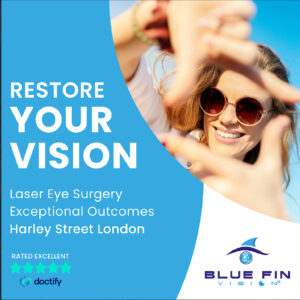How Refractive Lens Exchange Can Enhance Your Quality of Life
Refractive lens exchange (RLE) offers significant advantages for individuals who are dissatisfied with their vision or are unable to benefit from traditional laser surgery. Unlike LASIK, which reshapes the cornea to correct refractive errors, RLE involves the Refractive lens exchange removal of the natural lens in the eye and replacing it with an artificial intraocular lens (IOL). This makes RLE a particularly appealing option for those whose eyes have aged or whose refractive errors are too severe for laser procedures.

One of the primary reasons RLE has gained popularity is due to its effectiveness in treating presbyopia, the age-related loss of near vision that typically begins after the age of 40. As the lens in the eye becomes less flexible over time, it becomes more difficult to focus on close objects, leading to the need for reading glasses. By replacing the natural lens with an IOL, RLE can restore the eye’s ability to focus at various distances, providing clearer vision without the need for additional corrective eyewear.
In addition to presbyopia, RLE can also address common refractive errors, such as nearsightedness, farsightedness, and astigmatism. By choosing the appropriate type of IOL, patients can enjoy optimal vision correction that meets their specific needs. Monofocal IOLs, which focus on a single distance, can be ideal for individuals who primarily need distance vision, while multifocal and accommodating lenses can provide the added benefit of clear near, intermediate, and far vision. Toric lenses are a specialized option for those with astigmatism, offering an effective solution for correcting this condition in addition to refractive errors.
One of the most attractive aspects of RLE is its permanence. Unlike glasses or contact lenses, which require ongoing maintenance and replacement, the artificial lens implanted during RLE is designed to last for a lifetime. For patients who find themselves frequently changing prescriptions or dealing with the hassle of corrective eyewear, RLE offers a long-term solution that can significantly improve their daily lives.
Though RLE is generally considered a safe and straightforward procedure, it is important for patients to understand the potential risks. As with any surgery, complications such as infection, inflammation, or changes in the position of the implanted lens can occur. However, these risks are relatively rare, and most patients experience minimal discomfort during recovery. Additionally, patients can benefit from the support of their surgeon throughout the recovery process, with regular follow-up appointments to ensure optimal healing and vision outcomes.
For those seeking a permanent solution to refractive errors, RLE offers a life-changing opportunity. It not only corrects vision but also eliminates the need for glasses or contact lenses, freeing patients from the constraints of traditional eyewear. With its high success rates and the ability to address a wide range of vision issues, refractive lens exchange provides a comprehensive and effective solution for individuals looking to improve their quality of life and regain the clarity of vision they once had.